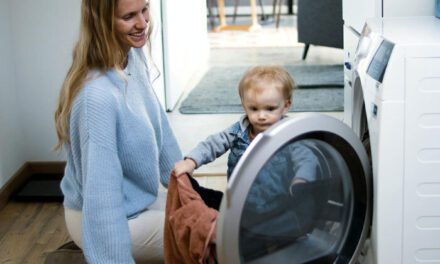It’s common for babies to react in the presence of a stranger and develop stranger anxiety. Whether it’s a distant relative or a stranger, you might start to notice your baby getting cranky or uncomfortable around them. This is a normal part of their intellectual development. It signals that your baby can tell the difference between the people they are close to as compared with those they don’t see often.
What Is Stranger Anxiety?
Stranger anxiety is an emotional response or phase when an unknown person approaches your baby. Like separation anxiety, it often begins around 8-9 months and can look like your baby is clingy or afraid of other people. By this stage your baby has worked out that you are very important in their lives.
Stranger anxiety can mostly resolve on its own but can sometimes continue to occur in toddlers up to the age of 2.
While some research suggests that babies who show an increase in fear between 6 – 36 months old are more likely to have symptoms of anxiety by 8 years old. However, it’s important to remember that this is a normal developmental stage. Ultimately, you can’t take the anxiety away from your baby, but you can find ways to react to. This will help them ease into feeling more comfortable around people they don’t often see.
While patience and encouragement can go a long way, here are 5 things you can do to help your baby manage this phase:
Reassure Them
When you notice your baby showing signs of anxiety or fear, reassure them, and show positive encouragement. This will give them the confidence to feel more at ease around strangers or distant relatives. And this support will require patience as changes in stranger anxiety won’t happen straight away, but it’s possible it may happen quicker with this reassurance.
Stay Close By And Stay Calm
It helps to stay near your baby or toddler so that they feel safe and secure when strangers are around. Give your baby lots of affection as they get used to the new environment or stranger. This comfort will give your baby the security they need to feel comfortable around someone new.
Give The ‘Stranger’ A Heads Up
Let your friend or relative know that your baby is going through a developmental stage and is often uneasy around new people. This is a great way to prevent others from feeling hurt by the withdrawal. And therefore lessens the tension during the interaction. Babies and toddlers can pick up the emotion in the room, so if your friend is not offended, it is more likely that your baby will relax into the environment easier.
Don’t Force Them
Forcing your baby or toddler to face their fears and anxiety around this issue will make things worse. It will often foster further anxiety when they meet someone they’re not comfortable with. Allowing your baby or toddler to communicate when they’re ready will make for a much for natural interaction. And this will also help them develop the communication skills they need in situations where they meet new people.
Frequently Introduce Them To New People
Prior to this developmental phase, try using a carrier that faces outwards when you are out and about. This allows your baby to get comfortable with seeing new faces, all while feeling the comfort of you around them. Allowing others to frequently hold or play with your baby prior to this stage can prepare them for meeting new people. And will hopefully lessen the apprehension surrounding stranger anxiety.
Takeaway
This milestone can be a challenging time for both you and your baby. Remember, your baby is experiencing big emotions that can be overwhelming for them. So, it’s important to hide any feelings of frustration you might be having.
Offer the right amount of warmth, encouragement, comfort, and patience, and your baby will move through this phase quickly.






